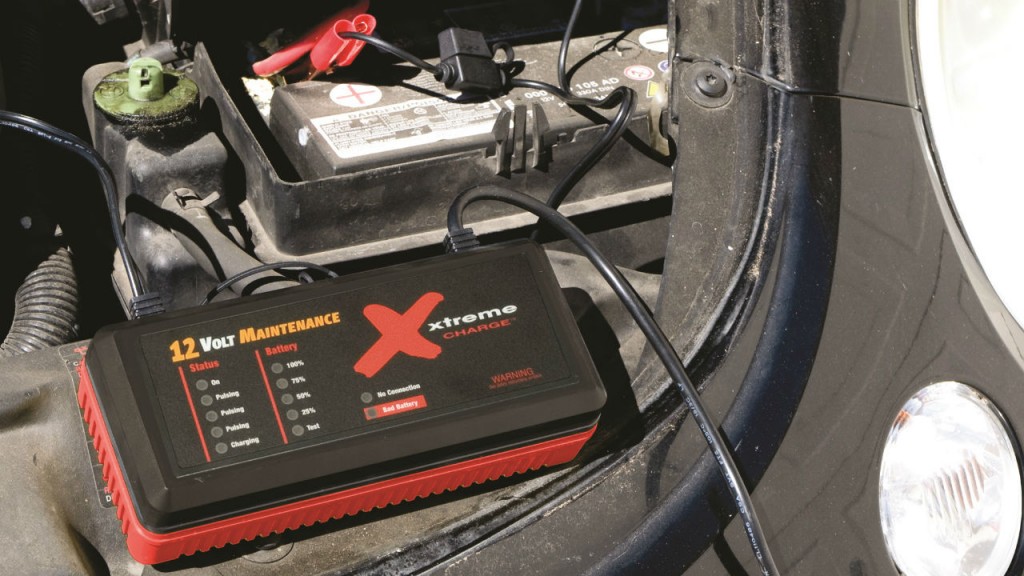Combatting Sulphation

The workhorse lead-acid battery handles the lion’s share of stored electrical power requirements in most of today’s mobile equipment and trucks. This includes VRLA, standard flooded, gel and the newer sealed AGM battery types.
As good as these batteries are, they all suffer from the same main failure mode – 80 percent of all lead-acid batteries fail due to the damaging effects of sulphation buildup.
If left unmanaged, sulphates found in the electrolyte will crystallize and root onto the battery plates which eventually results in premature battery failure. This is especially true with seasonally used vehicles and vehicles with key-off parasitic loads on the electrical system.
“When it’s cold outside, sulphation buildup on battery plates, in combination with the slow down of the chemical reaction within the battery, will rob the battery’s ability to provide operational power,” said PulseTech Products spokesman Rick Miller.
Since the battery has to work harder than normal to provide additional power for starting the engine, there is a further reduction in voltage which causes faster buildup of sulphates on the lead plates.
Miller pointed out that the battery’s electrolyte can actually freeze if the battery is in an advanced state of discharge and this could physically damage the lead plates resulting in having to replace the existing battery with a new one. Electrolytes in a completely discharged battery will freeze at only 8°F (-13°C)
Miller said the three main components of a battery maintenance program are:
- Diagnostic testing to enable users to take proactive steps to improve the life of the battery and eliminate unnecessary failure.
- Preventative maintenance to prevent or mitigate premature battery failure.
- Corrective maintenance to reverse or correct a problem that has occurred.
First, test the no-load voltage level with the engine turned off.
There are two types of battery testers – analog and digital versions. Most advanced testers use the BCI (Battery Council International) test, which involves the application of half the load rating of the battery to test its health. BCI tests simulate the load that will be applied by the vehicle’s accessories on the battery through the application of the load for about 10 to 15 seconds. Attach the tester to the battery and monitor the reading. Standalone battery testers have a capacity of absorbing as much as 100 amps or more of current.
If the battery needs charging but will not recharge, you might be facing an alternator problem or an electrical system issue, or the battery may be suffering from sulphation.
A test by the mechanic may identify the problem and/or you might consider using a recovery charger that will evaluate the level of charge and also restore the function of the battery’s plates to accept and release energy.
It’s important to find charging systems that combine scientifically validated desulphation technologies, such as PulseTech’s patented Pulse Technology, designed to remove and prevent the buildup of sulphation on battery plates.
This restorative technology uses a strictly controlled waveform, comprised of rise time, pulse-width, frequency and amplitude of current and voltage pulse. Used as part of a routine maintenance program, such smart charges have delivered impressive results, improving battery performance and extending life cycles.
As a battery ages through use or sits unused for periods of time, lead sulphate crystals can enlarge and build up excessively to the point where they create a physical barrier across the surface of the battery plates. Before long, this buildup can become so dense that a battery is no longer able to accept or release energy.
PulseTech’s exclusive, patented Pulse Technology cleans (desulphates) the plates and brings the battery to a like-new state capable of holding a full charge. Pulse Technology has been proven to extend lead-acid battery life up to five times what is typical.
A Battery Management Program (BMP) can dramatically improve battery service life, automatically keep batteries at peak capacity, extend life cycles up to five times, eliminate jumpstarts, reduce new battery purchases by 70 percent and reduce the labour needed for battery maintenance. The BMP toolbox involves a series of high tech smart tools, including analytical testers, battery recovery chargers, battery stock maintainers and the installation of permanent desulphators.

